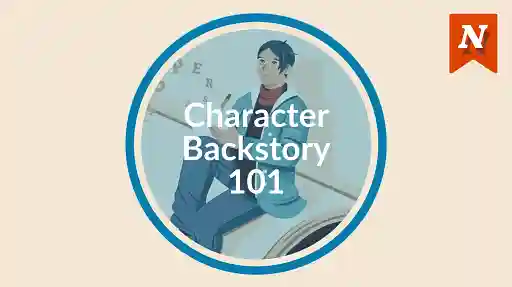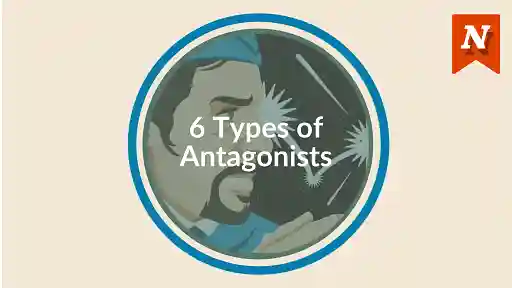Is your protagonist in danger of becoming a side character in their own story? The best main characters are the ones that are captivating and relatable — after all, if you want your readers to spend over three-hundred pages with your protagonist, they need to be compelling. This post will walk you through four handy tips to take your main character from two-dimensional to a fully-fledged protagonist worth reading.
1. Make the character feel vivid
Have you ever read a character so well-written that you can picture exactly what they look like and can predict how they’ll react to any given situation? Perhaps they are tall and awkward, or actively disregard societal norms like Jo March from Louisa May Alcott’s Little Women — a character that has proved to be a favorite of many readers for her particularly relatable flaws.
The characters we know and love are never vague. So, to successfully write a vivid main character like Jo, you must first work on bringing their specific behaviors, personality traits, and flaws to life. A brilliant way to start uncovering your characters’ defining quirks is to create a character profile!
Ask your characters questions
Imagine you’re sitting behind a desk, interviewing your protagonist for an exclusive feature in Vogue magazine. At first, you might ask them some trivial character questions to ease them in — for example, “What’s your favorite meal?” You might then move on to more hard-hitting questions, such as“What is your relationship with your parents like?”
The purpose of this exercise isn’t just to determine your character's eating habits. Rather, it’s a way of getting to know your characters on a more intimate level.
Everyone has their flaws
Now, think of your own favorite characters in literature: are they perfect paragons of virtue? No, it’s likely that they have a few unique quirks and some parts of their personality that are unpleasant. But this doesn’t make them unlikeable — in fact, these flaws probably make them far more relatable.
So, when you’re grilling your main characters, don’t be afraid to ask questions that highlight their flaws — for example, “Do you have any bad habits, like smoking or swearing too much?”
Free Character Questionnaire
40 questions to help you develop memorable characters.
Let’s continue to look at Little Women. After being invited to a New Year’s Eve party, Jo is firmly instructed not to “put your hands behind you, or stare, or say ‘Christopher Columbus!’” This snippet of dialogue is an excellent example of show, don't tell: using character interactions to naturally reinforce some of Jo’s previously established behaviors — for example, her inability to stay still or act in a way that society deems proper for women in the late nineteenth century.
Pro tip: Try giving your characters memorable mannerisms or turns of phrase — it will help you quickly establish a main character in a reader’s mind.
Now that you’ve identified some of your main character’s quirky behavior, let’s dig a bit deeper and find the root cause behind it.
2. Know what drives your character
If you want your main character to drive your story forward, they first need a good reason to get behind the wheel. Character motivation can be split into two matters: what this person wants and what they need. Whilst the former is usually an external goal, the latter requires some emotional insight — for example, Jo March wants to become a published author, but she needs to feel liberated from social conventions, such as marriage, that threaten to restrict her.
Regardless of what pushes your main character to achieve their goals, the most important thing is that, above all, their motivation is sufficient to help them push past any challenge you can throw at them.
Allow their motivations to evolve
As your protagonist grows and faces fresh challenges, their motivations should also evolve — this is the foundation of every strong character arc. In much the same way that a career criminal might learn to become a force for societal good, a character’s personal desires should change over the course of their story.
After hearing Professor Bhaer express his distaste for a similar sensationalist story that Jo has been writing, something changes in her. Whilst her goal remains to be published, she realizes that, above all, she wants to produce work that is valuable and respected by her peers — which, of course, will require more work and introspection. This sets her on a new track; writing stories that contain more “truth” than fantasy and which turn out to be much more successful than her previous stories. Her ability to reflect after conflict and reassess her goals is exactly what makes Jo March such a compelling character.
Now that you’re feeling comfortable with understanding your main character’s behavior, it’s time to raise the stakes a little.
3. Brainstorm stakes for your main character
For readers to become emotionally invested in your main character, there needs to be something at stake within their journey. The greater the risk your protagonist takes, the more eager your readers will be to find out what happens next.
If you’re not sure what is at stake for your main character, it is often helpful to look at the catalyst of your story and the events that follow as a guideline. For example, in The Wizard of Oz, Dorothy must travel to the wizard and defeat the wicked witch. If she fails, she’ll never return home and never see her family again.
Big stakes don’t just mean global destruction
To add further depth, consider what your characters’ external and internal stakes are. Here, ‘external’ refers to the tangible consequences of your character not achieving their goal — for example, if Jo doesn’t get a book deal, her dream of being a successful writer is over, and she will be forced to settle down and marry. However, internal stakes are much more introspective: since writing is what Jo has dedicated her life to, will it cease to have any meaning if she is unsuccessful?
By introducing clear stakes, you immediately create consequences for your character’s actions. You’ll heighten the inherent suspense of your story and give readers a reason to emotionally connect with your character.
Make their stakes specific to them
What’s most at risk for your character should be specific to their specific wants and needs.
In order to be a successful writer, Jo chooses to ‘sacrifice’ her family life and move to New York where she can write. But when she returns home to find her sister near death, she is forced to reconsider those priorities. Faced with the first real loss in her life, Jo realizes how important her family is to her, which completely transforms her outlook on marriage and her writing career.
To put a fine point on it, a character’s wants are usually specific. Not every reader can relate to Jo’s desire for literary acclaim. However, almost every person can relate to her need for family and human connection — and that need makes her story universal.
4. Use minor characters to develop your main characters
They say you can tell a lot about a person by how they treat others — and this is certainly true when it comes to your writing. So, pay close attention to scenes where your protagonist interacts with minor characters. These tend to be great opportunities to make your hero feel more “real.”
You’ll find that writers often draft in a minor character that your main character trusts. For example, Jo often turns to her mother, the ever-wise Marmee, in moments of conflict. As a static character, Marmee acts as a sounding board for Jo’s concerns and desires; their interactions provide insights into her emotional state that we might otherwise not have seen.
This tactic of introducing minor characters can also serve other narrative purposes — perhaps to show how your character treats others or to reveal nuggets of backstory via memories that two characters share.
Showing by contrast
Minor characters can also accentuate the main character's qualities simply through contrast — for example, Marmee’s level-headedness naturally makes Jo seem more erratic by comparison. Either way, this is a fantastic practical tip to naturally build out your main character.
Pro tip: As you begin to write your main character into your story, use that character profile from earlier to check that their behavior aligns with their established personality traits — this helps to maintain continuity and credibility.
Next time you find yourself lost in the complexity of character creation, these steps will map out a clear path to help you bring your main character (and story) to life!









I haven't found a well developed character-driven book I didn't like, even if it fails to deliver on it's promise. If the main character entertains, intrigues are pulls at my emotions, it's worth the read for me.
2 Cents 'N' - Almost 7 years ago
You're right, so long as an engaging character (or several) is at the heart of a story, authors can make the most unlikely subjects and plot lines interesting. Thanks for sharing your thoughts, 2Cents.
Bridget At Now Novel - Almost 7 years ago
Raymond Chandler considered plot a secondary issue--characters were everything. Sadly every movie adaptation of his work seemed pathologically driven to knot up the plot to the point that you need a program, map, and GPS to work it. Sadly, at the expense of characters, so by the end you really don't care all that much.
Elias Mc Clellan - About 6 years ago
Late to the party, as usual but I cannot love this more. Can't wait to share for #WriterWednesday.
Elias Mc Clellan - About 6 years ago
This blog is fantastic, and it makes me visualize, hear and feel how a character performs.
Arturo Ramirez Perez - Over 3 years ago
Hi Arturo, I'm glad to hear that. Thank you for reading our blog and happy writing!
Jordan - Over 3 years ago